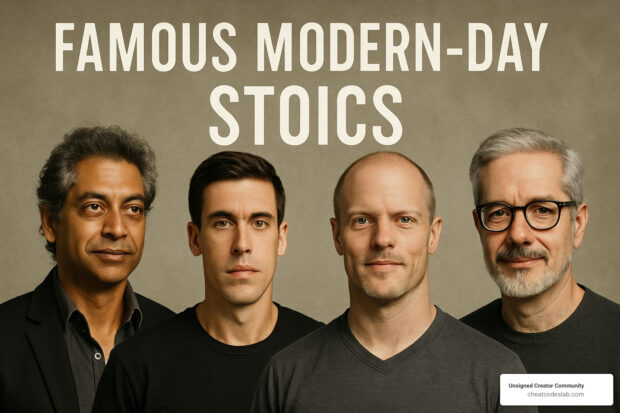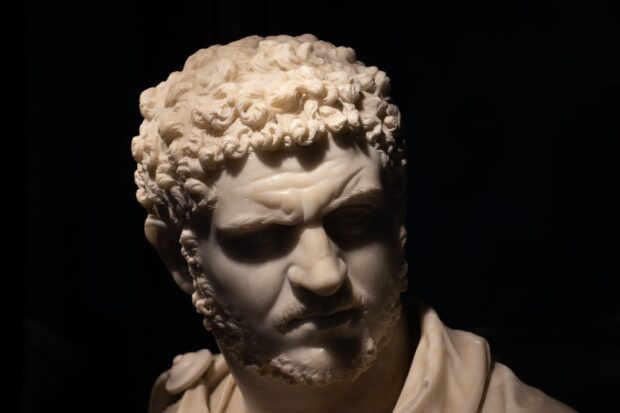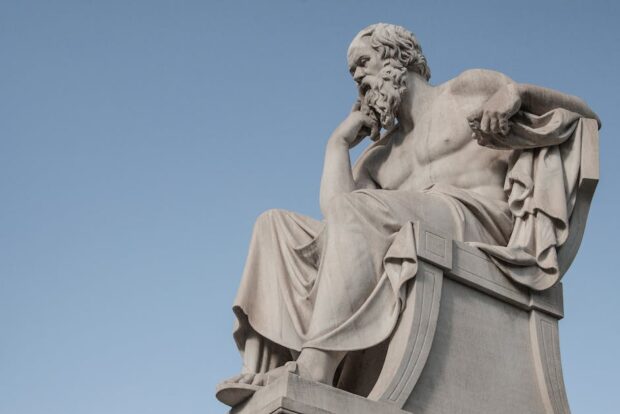
The Timeless Wisdom of Stoicism
Ever notice how some people seem unshakable even when life throws its worst at them? That’s the essence of the stoic way of life – not emotional suppression as many mistakenly believe, but a practical philosophy for building inner strength and finding peace amid chaos.
At its heart, Stoicism teaches us to distinguish between what we can and cannot control. Rather than exhausting ourselves fighting against unchangeable realities, we learn to direct our energy toward what truly matters: our own responses, judgments, and character.
Born in Athens around 300 BCE and later acceptd throughout the Roman Empire, Stoicism offers wisdom that feels surprisingly modern. The philosophy centers on developing practical wisdom to guide your decisions, courage to face difficulties, justice in your dealings with others, and temperance in your desires. When practiced together, these virtues create a foundation for a meaningful life regardless of external circumstances.
“It’s not the events that upset us, but our judgments about the events.” — Epictetus
What makes Stoicism special isn’t philosophical theory but its emphasis on daily practice. Marcus Aurelius didn’t just theorize about patience while ruling Rome – he actively journaled each night to examine his thoughts and actions. Seneca didn’t merely write about valuing time – he lived with constant awareness of life’s brevity.
These weren’t distant academics but people facing real challenges. Their writings feel like advice from a wise friend who understands your struggles and offers practical ways forward.
The stoic way of life continues to prove its worth today. According to the 2022 Stoic Week report, 70% of participants experienced improved well-being after just seven days of Stoic practices, with over 60% enthusiastically recommending these techniques to others.
I’ve personally integrated Stoic principles into my entrepreneurial journey, finding them invaluable for maintaining focus amid uncertainty. When a project fails or criticism stings, the Stoic practice of examining what I can control helps me bounce back faster and learn from the experience rather than dwelling in frustration.

If you’re curious to explore further, check out these resources about the stoic way of life:
– A Guide to Stoicism by St. George Stock
– George Washington Stoicism
– St Paul and Stoicism
Why Learn the Stoic Way?
We’re living through what can only be described as a modern stress epidemic. Between the never-ending notifications, the pressure to present a perfect life online, and the constant barrage of world events, our minds rarely get a moment’s peace. It’s no wonder anxiety rates continue climbing year after year.
The stoic way of life offers a powerful antidote. Instead of being tossed about by circumstances beyond your control, Stoicism teaches you to develop an internal compass – to respond rather than react. This shift from feeling like life’s victim to becoming the author of your responses transforms how you experience challenges.
The evidence speaks for itself. A 2020 survey found that 86% of people practicing Stoic exercises reported greater resilience to stress. When negative emotions are steadily increasing globally, these ancient practices provide timely solutions.
What makes Stoicism particularly valuable today is its practicality. It doesn’t ask you to adopt complex beliefs or retreat from society. Instead, it offers straightforward techniques you can apply during your commute, in difficult conversations, or when facing disappointment. The philosophy meets you exactly where you are, providing tools to steer life with greater calm and clarity.
Core Principles of the Stoic Way of Life
The stoic way of life isn’t just a collection of motivational quotes you might find on Instagram. It’s a rich, coherent system built on three interconnected branches that work together like parts of a living organism. As Diogenes Laertius so beautifully put it: “They compare philosophy to a living being, likening logic to bones and sinews, ethics to the fleshier parts, and physics to the soul.”
Think of these branches—physics, logic, and ethics—as the foundation, framework, and finish of a well-built home. Each supports the others in creating a complete approach to understanding our place in the universe and living well within it.

At the heart of Stoic physics beats the concept of logos—a divine, rational fire that flows through and connects everything in existence. The Stoics weren’t mystical about this; they were materialists who believed this cosmic reason was a physical force creating order in the universe. Within this deterministic web, they finded something remarkable—genuine human freedom and responsibility. As Marcus Aurelius reminded himself: “Constantly regard the universe as one living being, having one substance and one soul.”
The Historical Roots of the Stoic Way of Life
The stoic way of life began with a disaster that turned into opportunity. Imagine losing everything you own in a shipwreck and finding yourself stranded in a foreign city. That’s exactly what happened to Zeno of Citium around 300 BCE near Athens. Instead of despairing, he turned to philosophy, eventually founding his own school at the Stoa Poikile (Painted Porch)—hence the name “Stoicism.”
Zeno later joked about his misfortune: “I made a prosperous voyage when I suffered shipwreck.” This ability to find silver linings in dark clouds would become a hallmark of Stoic thinking for centuries to come.
After Zeno came Cleanthes, known for his physical toughness and moral strength. He supported himself through manual labor while studying philosophy, carrying water at night so he could learn during the day. Cleanthes memorably compared the unwise to “a dog tied to a cart, compelled to go wherever it goes”—a vivid image of how we suffer when fighting against reality.
The brilliant Chrysippus followed, writing over 300 books on logic alone (sadly lost to history) and systematizing Stoic thought so thoroughly that later Stoics acknowledged: “If there had been no Chrysippus, there would have been no Stoa.”
Stoicism evolved through three distinct periods:
- Early Stoa (3rd-2nd centuries BCE): The founding fathers—Zeno, Cleanthes, and Chrysippus—laid the philosophical groundwork.
- Middle Stoa (2nd-1st centuries BCE): Panaetius and Posidonius adapted the philosophy to appeal to practical-minded Romans.
- Late Stoa (1st-3rd centuries CE): Roman Stoics like Seneca, Epictetus, and Marcus Aurelius focused on living well in challenging times.
The Roman period gave us the most accessible Stoic texts we treasure today. Seneca wrote letters on everything from managing anger to using wealth wisely. Epictetus, who rose from slavery to become a renowned teacher, focused on finding freedom through mental discipline. And Marcus Aurelius, emperor of Rome, kept a private journal (later published as “Meditations”) to stay grounded amid the pressures of ruling an empire.
The Stoic Way of Life and Living According to Nature
When Stoics talk about “living according to nature,” they don’t mean ditching your smartphone and moving to the woods. The stoic way of life encourages alignment with both human nature (our rational and social qualities) and cosmic nature (the rational order of the universe).
The Stoic concept of oikeiôsis explains our natural development from self-care to caring for others. Even animals protect themselves instinctively—like a turtle struggling to right itself when flipped over. But humans, with our unique capacity for reason, naturally extend this care beyond ourselves to family, community, and eventually all of humanity.
This expanding circle of concern leads to Stoic cosmopolitanism—the idea that we’re citizens of the cosmos first, and of our local communities second. As Epictetus put it: “If what philosophers say about the kinship of God and men is true, what else remains for men to do but what Socrates did: never to reply to the question of where he was from with ‘I am an Athenian’ or ‘I am a Corinthian,’ but ‘I am a citizen of the cosmos.'”
The stoic way of life beautifully balances personal well-being with social responsibility. We have natural duties to ourselves, our families, our communities, and humanity as a whole—all flowing from our nature as thinking, social beings. In this interconnected view, true self-interest and social interest ultimately align rather than conflict.
Virtue Is the Only True Good
Perhaps the most radical aspect of the stoic way of life is its perspective on what really matters. For Stoics, virtue is the only true good, vice the only true evil, and everything else—health, wealth, reputation, pleasure, even life itself—are “indifferents.”
Don’t misunderstand—Stoics aren’t indifferent to life’s circumstances. They classify these externals as “preferred indifferents” (health is generally better than illness) or “dispreferred indifferents” (poverty is generally worse than wealth). But crucially, none of these external circumstances determine our happiness or moral worth—only virtue can do that.
The four cardinal virtues in Stoicism work together like instruments in a symphony:
Prudence (practical wisdom) helps us make good decisions in complex situations. Courage enables us to face challenges and do what’s right despite fear. Temperance guides us toward moderation and self-control. And Justice ensures we treat others fairly and fulfill our social duties.
A truly virtuous person achieves apatheia—not emotionless apathy, but freedom from destructive emotions. The Stoics identified four unhealthy emotional states: distress (irrational contraction of the soul), fear (expectation of something bad), lust (irrational desire), and delight (irrational elation).
These harmful passions arise from mistaken judgments about what’s truly good or bad. When we correctly recognize that virtue alone is good, we experience only rational, healthy emotions called eupatheiai (good-feelings).
As Seneca beautifully expressed: “A man thus grounded must, whether he wills or not, necessarily be attended by constant cheerfulness.” For more on these core principles, explore this in-depth Stoic overview or read A Guide to Stoicism by St. George Stock.
Daily Practices and Modern Applications
The stoic way of life isn’t just something to think about—it’s something to live. The ancient Stoics weren’t ivory tower philosophers; they developed practical exercises to build virtue and resilience that we can still use today. These timeless practices fit surprisingly well into our modern lives.

Stoic Exercises for Emotional Resilience
Think of Stoicism as offering a mental toolkit that helps you weather life’s storms with greater calm. These aren’t complicated techniques—they’re simple practices that build remarkable strength over time.
The most fundamental Stoic practice is the dichotomy of control. Before facing any situation, Stoics take a moment to sort what’s “up to me” from what isn’t. Your opinions, desires, and actions? Those are yours to control. The weather, other people’s behavior, or whether your flight gets delayed? Not so much. As Epictetus put it at the very beginning of his handbook: “Some things are within our power, while others are not.” This simple mental sorting can dramatically reduce anxiety because you stop wasting energy on things you can’t change.
Another powerful practice is negative visualization, or what the Stoics called premeditatio malorum. This isn’t about being pessimistic—quite the opposite. By briefly imagining losing things you value—your health, your job, even loved ones—you develop deeper appreciation for what you have right now. Seneca practiced this regularly, sometimes eating simple food and wearing rough clothes while asking himself, “Is this the condition that I feared?” Afterward, he found himself grateful for his normal comforts rather than taking them for granted.
The evening review is perhaps the most transformative daily practice. Before bed, take a few minutes to reflect on your day: What went well? Where did I fall short? Which virtues did I practice or neglect? Seneca described his own practice: “When the light has been removed and my wife has fallen silent, I examine my entire day and go back over what I’ve done and said, hiding nothing from myself.” This simple reflection builds self-awareness and creates continuous improvement.
Many Stoics also practiced voluntary discomfort—deliberately experiencing cold, hunger, or other mild discomforts. Marcus Aurelius would sleep on a hard mat rather than his imperial bed. This wasn’t about punishment but about freedom—finding that many “necessities” are actually preferences and building resilience for when real hardships occur.
Perhaps the most profound Stoic practice is amor fati (love of fate)—not just accepting what happens but embracing it wholeheartedly. As Marcus Aurelius wrote: “Accept the things to which fate binds you, and love the people with whom fate brings you together, but do so with all your heart.” This doesn’t mean passively accepting injustice but rather working with reality as it is, not as you wish it were.
Modern research validates these ancient practices. The 2022 Stoic Week report showed that participants experienced a 14% reduction in negative emotions after just one week of Stoic exercises. These aren’t just philosophical ideas—they work.
Stoicism in Relationships and Leadership
Contrary to the misconception that Stoics are cold or detached, the stoic way of life actually fosters deeper connections. Stoicism teaches that we’re social beings by nature, meant to work together like “the upper and lower rows of teeth” (as Marcus Aurelius put it).
Stoics recognize that we play various roles in life—parent, friend, colleague, citizen—each with its own responsibilities. Epictetus compared life to a play, saying our duty is “to act well the part that is given to you.” This role ethics helps us show up fully in our relationships while maintaining healthy boundaries.
In leadership positions, Stoicism promotes a servant-leader mindset. Despite being the most powerful man in the world, Marcus Aurelius constantly reminded himself that his position was about service, not privilege. Today’s organizations increasingly value Stoic leadership principles because they produce resilient, principled leaders who remain calm during crises and treat setbacks as growth opportunities.
The stoic way of life offers particular wisdom for challenging relationships. When dealing with difficult people, Epictetus suggested responding to criticism with humor: “You obviously don’t know about my other vices, otherwise you would have mentioned those as well.” This disarms criticism while preserving your inner peace. For deeper guidance on applying Stoic wisdom to relationships, explore our resources on Stoicism in Relationships and Stoicism and Toxic Relationships.
Modern Psychology Meets Stoicism
The connection between ancient Stoicism and today’s evidence-based psychology is remarkable. Cognitive Behavioral Therapy (CBT), one of psychology’s most effective approaches, has Stoic DNA running through it.
Albert Ellis, who developed Rational Emotive Behavior Therapy, openly acknowledged his debt to Epictetus and other Stoics. The core CBT insight—that our thoughts about events determine our feelings, not the events themselves—echoes Epictetus’s teaching that “It’s not events that upset us, but our judgments about events.”
Aaron Beck, father of Cognitive Therapy, similarly built upon Stoic foundations. The practice of identifying and challenging cognitive distortions mirrors the Stoic examination of false judgments. This isn’t just philosophical trivia—it means Stoicism anticipated by two millennia what science now confirms works for mental health.
Recent research from Scientific research on Stoic exercises continues to validate Stoic approaches. A 2020 survey found that 86% of people who practiced Stoic exercises reported better stress resilience. Participation in Stoic Week has grown from 1,000 people in 2012 to over 8,000 in 2022, with consistent reports of improved well-being.
What makes the stoic way of life particularly powerful is that it’s not just a collection of techniques but a complete philosophy. Unlike some therapeutic approaches that only aim to reduce symptoms, Stoicism addresses the big questions: How should I live? What really matters? What kind of person do I want to be? It offers both practical tools for daily challenges and a moral compass for the journey.

Conclusion
The stoic way of life isn’t just an ancient philosophy—it’s a practical toolkit for modern living. Throughout this journey, we’ve seen how focusing on what we can control, practicing virtue, and accepting reality as it is can transform our relationship with life’s inevitable challenges.

Let’s be clear about what Stoicism isn’t—it’s not about suppressing your emotions or gritting your teeth through hardship. The ancient Stoics would probably roll their eyes at our modern misunderstanding of their teachings! Instead, they offered something much more valuable: a path to inner freedom through thoughtful reflection and virtuous action.
What makes these ancient practices so remarkable is their proven effectiveness today. The 2022 Stoic Week report revealed something fascinating—70% of participants reported better well-being after just seven days of practicing Stoic techniques. That’s not just philosophy; that’s practical results. With over 300,000 people now subscribing to daily Stoic newsletters, it’s clear these teachings resonate with our modern struggles.
The beauty of the stoic way of life lies in its simplicity. You don’t need special equipment or hours of free time. Start your morning with a quick reflection on what you can and cannot control. Take a few minutes during lunch to practice negative visualization—not to make yourself anxious, but to build gratitude for what you have. End your day with an honest review of your actions. Small practices, profound results.
I love Epictetus’s straightforward advice: “Don’t explain your philosophy. Embody it.” The true test isn’t quoting Marcus Aurelius at dinner parties (though that can be fun too). It’s how you respond when your flight is canceled, when a colleague takes credit for your work, or when life throws you an unexpected curveball.
At CheatCodesLab, we’ve seen how the stoic way of life helps creators steer uncertainty, build resilience, and find purpose in their work. Our community members often share how these principles have transformed not just their professional lives but their relationships and overall wellbeing.
Remember what Seneca wisely observed: “It is not that we have a short time to live, but that we waste a lot of it.” By embracing Stoic principles, you’re not just learning to endure life—you’re learning to truly live it, with purpose and tranquility, regardless of external circumstances.
Want to dive deeper? Explore our comprehensive Stoicism resources section for practical guides, historical context, and modern applications of these timeless teachings.
Life is short and unpredictable. Why not face it with the wisdom of those who’ve been navigating human challenges for over two thousand years? Your journey into the stoic way of life starts with a single choice—the choice to focus on what truly matters, what’s truly in your control: your own thoughts, judgments, and actions.
















